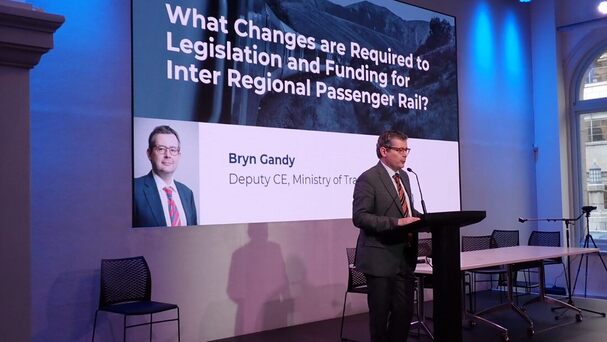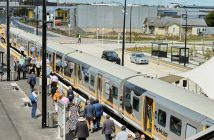The Future is Rail conference was held in Wellington on June 28th – Suraya Sidhu Singh and Laurie Winkless give a brief summary of what was discussed and the challenges facing rail in New Zealand

Credit: Richard Young
- Rail as essential infrastructure: Passenger rail is a vital piece of infrastructure like water, power, telecommunications etc. Therefore, it should be an investment priority.
- Rail as a public service: We must give people choice on how they travel. This will make healthcare, education, work opportunities accessible to everyone; not just those with a car. The recent parliamentary inquiry showed a huge appetite from New Zealanders to return to having frequent, affordable, joined-up public transport across the country.
- Rail as the core of an interconnected, national transport system: Rail can’t do it alone. It needs to be part of a multimodal approach, supported by buses, pedestrian access, cycle paths, etc. Move to ‘mobility as a service’ approach (as is seen elsewhere) – this may require a national ticketing system.
- Rail as a connector: Spatial planning should go hand-in-hand with transport planning in order to support NZ’s growing populations. Rail can also help bridge the rural-urban divide. Focusing only on metro services means that rural communities are – and will be – underserved.
- Rail as a contributor to NZ’s environmental target: The effects of climate change are already being felt. Transport represents a large proportion of the country’s emissions footprint. Moving people (and more freight) from cars and planes onto trains will come with a significant reduction in emissions. Night trains between Auckland and Wellington could play a big role in that.
- Rail as a driver of economic development: Regions outside of metro areas can benefit and grow through the provision of new rail routes, the addition of new stations on existing routes, and more frequent services on all rail routes.
- We need to act sooner rather than later; to be bolder, braver, and more forward-looking. We’ve lost a lot of infrastructure, momentum and expertise in recent decades.
- There is disagreement between political parties on where rail ‘makes sense’.
- There was widespread agreement on the day that the Golden Triangle (Auckland, Hamilton and Tauranga) should be a priority for freight and passengers.
There were also challenges identified which included:
- A long-established car (and more recently, aviation) bias in NZ decision-making.
- Funding – viewing rail as a cost vs. an investment. The taxpayers’ purse is already under a lot of pressure, so there is a need to explore alternative approaches like public-private partnerships.
- There is no national coordination and we have artificial regional borders, often based on water catchments, that can determine whether people have access to public transport or not.
- The South Island is too often omitted from conversations on passenger rail, despite the presence of existing infrastructure, and considerable ongoing work from Dunedin City Council.
- Infrastructure issues – Limited electrification across the existing rail network. The Future of Rail report found severe underinvestment leading to managed decline. There’s not enough rolling stock on existing rail routes, and large parts of the old network (e.g., South Island) need to be upgraded wholesale.
- Governments exist for a short term and each one has its own priorities. But infrastructure needs long-term thinking and generational investments.
The Future Is Rail Conference provides an opportunity to develop a shared vision of the contribution that a rebuilding of inter-regional and long-distance passenger rail services can make to creating a more sustainable future through reducing carbon emissions and increasing mobility choices for New Zealanders, especially those living in regional New Zealand.
This one-day conference brings together transport political decision makers and top policy advisers from central and local government, iwi, rail operators, business/industry leaders, and climate, community, enhanced mobility and rail advocates.








